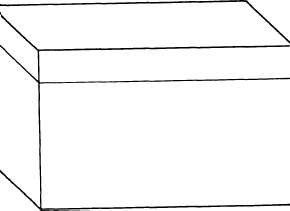“One-third-cut”
folders are normally
preferred over
“straight-cut” folders because they
allow the RP to glance through a file drawer for
a particular folder without having to look at each
folder separately as is usually required with
“straight-cut” folders. NOTE: “One-third-cut”
folders are ordered by tab position in lots of 50
folders per box. Before requisitioning file folders
and in order to ensure that a sufficient number
are maintained in the office of the chaplain, the
RP should consider the volume of material to be
filed, the number of filing drawers available, and
the variety of subjects that need to be filed in
separate folders.
It should be noted that file folders prescribed
for use in the Marine Corps are listed in Records
Management Program for the Marine Corps
(MCO 5210.11). RPs assigned to Marine Corps
units should check this publication prior to re-
quisitioning any folders.
CARD FILES
Card files such as the one shown in figure 3-4
are often used in the office of the chaplain for
such purposes as establishing and maintaining a
tickler system. The procedures for establishing a
tickler system will be explained in another section
of this chapter. Standard 3" X 5" and 5" X 8"
card files are the ones most often used. These
types are readily available in the Navy or Marine
Corps supply systems. These card files should be
used in the office of the chaplain to serve as
receptacles for index cards with information
specified by the command chaplain. It is
Figure 3-4.—Card file (5" x 8").
important for the RP to periodically check the
card files to ensure that information is up to date.
CLASSIFIED FILES
AND RECORDS
The Information Security Program as out-
lined in the Information Security Program
Regulation (DOD 5200.1R) and Department of
the Navy Information Security Program Regu-
lation (OPNAVINST 5510.1) for safeguarding
classified information was explained in Chapter
2. Since all RPs must be eligible for access to
classified material, it is important to note the
security requirements for file cabinets that con-
tain classified material.
Basic guidelines for determining the security
requirements of file cabinets that contain classified
information are contained in OPNAVINST
5510.1. The following security precautions were
extracted from this publication and should be
observed when classified material is handled or
stowed:
A portable cabinet has little security value
since it can be transported easily and, therefore,
should NOT be used for stowage of classified
material.
Combination locks are more secure than
key locks and should be used to guard against
unauthorized personnel entering a file cabinet that
contains classified information.
Wood file cabinets should NOT be used
to stow classified material since they do not
offer protection against fire damage.
Metal cabinets should be used to stow
classified material since they offer protection
against theft and fire.
Vaults provide the most secure means of
stowing classified material and should be used
when available.
The RP should check with personnel in the ad-
ministrative department whenever questions arise
concerning the stowage of classified material.
3-3

